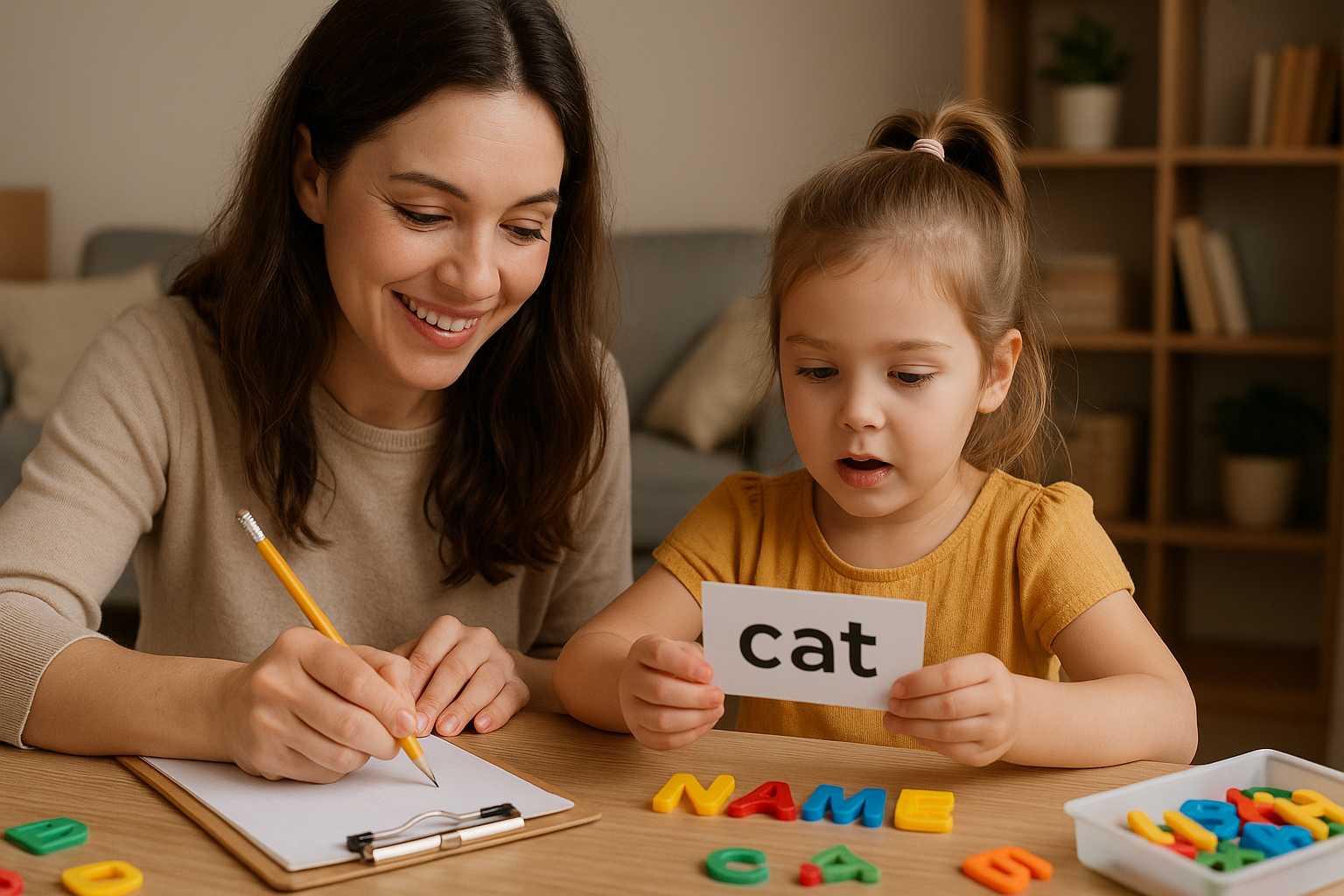Literacy is more than just reading and writing—it’s the foundation for all future learning. In early childhood, literacy skills are built gradually through play, storytelling, and daily conversation. You don’t need to be a teacher or have a special curriculum to support early literacy at home. With a few intentional activities, you can lay the groundwork for strong reading and writing abilities in the years ahead.
Here are seven engaging, practical activities that will help your child develop early literacy skills in a fun, low-pressure environment.
1. Label Everyday Items Around the House
Help your child connect written words with objects by labeling items in your home.
Try using sticky notes or printed labels for things like:
- Door
- Chair
- Table
- Mirror
- Window
As you walk around the house, point to the words and read them aloud. Eventually, your child will begin to recognize them independently.
Skills developed: print awareness, word-object association
2. Create a “Name Wall”
Children love seeing their own names and the names of people they care about. Set up a wall or bulletin board where you post names alongside photos.
Activities to try:
- Spell out names with magnetic letters
- Match name cards to family photos
- Practice writing their own name daily
This helps children understand that letters form meaningful words—especially ones that matter to them.
Skills developed: letter recognition, personal connection to literacy
3. Play Sound Games and Rhyming Challenges
Phonemic awareness (the ability to hear and manipulate sounds in words) is a critical early reading skill.
Games to try:
- “I’m thinking of a word that starts with the ‘b’ sound.”
- “What rhymes with cat?”
- Clap syllables together (e.g., “el-e-phant”)
- Sing rhyming songs like “Down by the Bay” or “The Name Game”
These playful sound exercises help children become more aware of how words are built.
Skills developed: phonemic awareness, listening, verbal flexibility
4. Make a Letter Hunt Game
Hide letters (magnetic, foam, or paper cutouts) around a room or outdoor area. As your child finds each one, say the letter’s name and a word that starts with it.
Example: “You found the letter B! B is for banana!”
You can also turn it into a scavenger hunt by asking, “Can you find something that starts with the letter S?”
Skills developed: letter recognition, vocabulary, memory
5. Start a Morning Message Routine
Each morning, write a short, simple message on a whiteboard or notebook for your child.
Example:
“Good morning, Lily! Today is sunny. Let’s go to the park.”
Then:
- Read it aloud together
- Point out sight words (e.g., the, is, go)
- Ask your child to circle familiar letters
This daily exposure helps your child become comfortable with reading and writing structures.
Skills developed: sentence structure, sight word recognition, reading fluency
6. Encourage “Pretend Writing”
Even before kids can form letters correctly, they benefit from the act of writing.
Set up a writing station with:
- Blank paper or notebooks
- Crayons, markers, or pencils
- Envelopes, sticky notes, and labels
Invite them to:
- Make menus, shopping lists, or letters to family
- “Write” books and illustrate them
- Label their drawings
Tip: Don’t worry about spelling at this stage—just encourage the effort and pretend writing.
Skills developed: pre-writing, fine motor control, storytelling
7. Read Aloud Every Day
This one never gets old: reading aloud is the single most important thing you can do to support literacy at home.
During story time:
- Track words with your finger
- Pause to ask, “What do you think happens next?”
- Talk about the characters and setting
- Let your child retell the story after reading
Repetition builds familiarity with structure, vocabulary, and grammar.
Skills developed: comprehension, vocabulary, love for reading
Making Literacy a Natural Part of Home Life
The most effective way to build literacy skills is to weave them naturally into daily life. Talk with your child often, read together, write notes, and play with sounds and letters throughout your routine.
Don’t pressure your child to read or write perfectly. Instead, celebrate the small steps: recognizing a letter, making a connection, scribbling a story, or reciting a rhyme. These are all building blocks for strong future readers and writers.
With patience, encouragement, and consistency, your home can become the perfect environment for literacy to bloom.
